March 4, 2022
Air Date: March 4, 2022
FULL SHOW
SEGMENTS
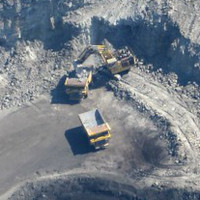
SCOTUS Could Shackle EPA
View the page for this story
The US Environmental Protection Agency has a legal duty to regulate greenhouse gases as harmful air pollutants. But a more conservative US Supreme Court recently heard oral arguments in a case that could significantly limit the tools EPA can use to curb these emissions from power plants, even though such rules don’t yet exist. Vermont Law School Professor Pat Parenteau joins Host Steve Curwood to discuss the risks the case West Virginia v. EPA pose to environmental regulation writ large. (13:22)
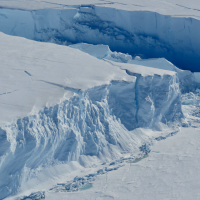
Florida-Sized Glacier Could Unleash 2+ Feet of Sea Level Rise
View the page for this story
Thwaites Glacier in Antarctica is one of the largest in the world, and scientists consider it the world's most important glacier, not just due to its size, but also because of the massive amounts of ice it is holding back behind it. Glaciologist Karen Alley joins Host Jenni Doering to explain how the melting and collapse of this glacier and the ice it holds back could affect sea levels in years yet to come. (08:59)
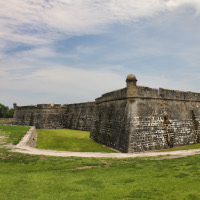
Rising Seas Threaten Archaeological Treasures
/ Brendan RiversView the page for this story
Rising sea levels along coastal Florida threaten to erode thousands of years of human history at valuable archeological sites. Among the threatened structures is the Castillo de San Marcos, a historic fort built by the Spanish in 1672. Brendan Rivers of WJCT News 89.9 in Jacksonville reports on efforts to document the shoreline and implications for the local tourism industry and other heritage sites around the world. (04:57)
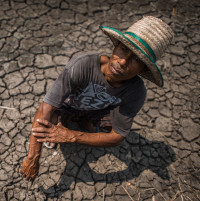
IPCC’s “Atlas of Human Suffering”
View the page for this story
The latest report from the United Nations Intergovernmental Panel on Climate Change warns that the climate emergency is at risk of becoming a disaster for human civilization. Professor of Geosciences and International Affairs at Princeton University Michael Oppenheimer was a review editor for the Sixth Assessment by the IPCC and joined Host Jenni Doering to discuss how rising heat and seas pose extreme risks to billions of people. (11:12)

Climate in the State of the Union
View the page for this story
This week, Peter Dykstra, an editor at Environmental Health News, joins Host Steve Curwood to discuss how climate and clean energy factored into President Biden’s State of the Union Address. We end with a look into the future: Senator Jim Inhofe, America’s most famous climate change denier, will soon retire, and he has agreed to an interview with Peter Dykstra in 2034, when the senator turns 100. (04:35)
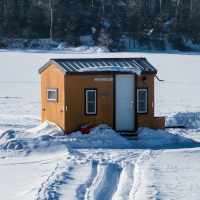
Ice Fishing on a Tidal River
/ Mark William DamselView the page for this story
Winter can be cold and dark, but the bright light reflected from frozen lakes, ponds, and streams can be cheery and warm. And that’s the secret of ice fishing. Mark William Damsel explains the joys of ice fishing on a frozen river in this audio postcard from Living on Earth's Bobby Bascomb. (03:40)
Show Credits and Funders
Show Transcript
220304 Transcript
HOSTS: Jenni Doering, Steve Curwood
GUESTS: Karen Alley, Mark William Damsel, Michael Oppenheimer, Pat Parenteau
REPORTERS: Peter Dykstra, Brendan Rivers
[THEME]
CURWOOD: From PRX – this is Living On Earth.
[THEME]
CURWOOD: I’m Steve Curwood.
DOERING: And I’m Jenni Doering
The highest court in the land hears an appeal from the State of West Virginia objecting to an EPA climate change rule that doesn't exist.
PARENTEAU: The Supreme Court has taken review of an abstract question, of what is EPA's authority to regulate these plants before the Biden administration has even adopted a rule! It's the very definition of an activist court.
CURWOOD: Also, rising seas are already threatening to destroy historic sites in Florida.
MURRAY: I’m always amazed, every time I come, like just how much higher the tide seems. If this is what’s happening to the places where people used to live now, it’s like what's coming for the places that we live? Because it's not slowing down. These impacts are just kind of gonna snowball.
CURWOOD: That and more this week on Living on Earth – Stick Around!
[NEWSBREAK MUSIC: Boards Of Canada “Zoetrope” from “In A Beautiful Place Out In The Country” (Warp Records 2000)]
[THEME]
SCOTUS Could Shackle EPA
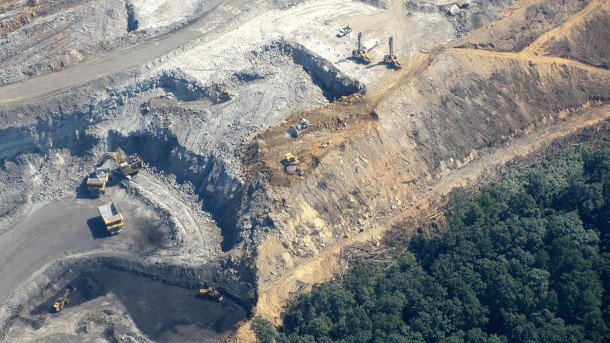
Coal mining in the State of West Virginia, the lead plaintiff in the case West Virginia v. EPA. (Photo: Delta Whiskey, Flickr CC BY-NC-ND 2.0)
DOERING: From PRX and the Jennifer and Ted Stanley studios at the University of Massachusetts, Boston this is Living on Earth. I’m Jenni Doering
CURWOOD: And I’m Steve Curwood.
Congress has yet to enact comprehensive climate legislation, so if the Biden administration wants to set America on track for net zero carbon emissions by 2050 it will have to rely on executive orders and regulations. According to a landmark ruling by the US Supreme Court in 2007 CO2 is an air pollutant that the Environmental Protection Agency must regulate. But so far EPA efforts to actually curb the large amounts of global warming gases from power plants have gotten snarled in litigation. And just the other day a more conservative Supreme Court heard arguments in a case that could tie the hands of the EPA, even though those rules don’t even exist. Joining me now to discuss is Pat Parenteau, Professor at the Vermont Law School and former EPA Regional Counsel. Welcome back to Living on Earth, Pat!
PARENTEAU: Thanks, Steve, good to be with you.
CURWOOD: So, Pat, I'm confused. Conservatives have said for a long time that judges shouldn't be activists. But to what extent is this so-called conservative Supreme Court changing along those lines?
PARENTEAU: Oh, right. I mean, they're reaching out for cases that in the past, the Supreme Court would never take. The big kahuna case on the calendar of the Supreme Court this year, the West Virginia versus EPA case involving regulation of greenhouse gases from power plants, for example, there is no rule on the books right now regulating these emissions. So the Supreme Court has taken review of an abstract question of what is EPA's authority to regulate these plants before the Biden administration has even adopted a rule! It's the very definition of an activist court.
CURWOOD: So West Virginia v. the Environmental Protection Agency, has been called by some as the biggest climate change case in a decade. What makes it such a big deal?
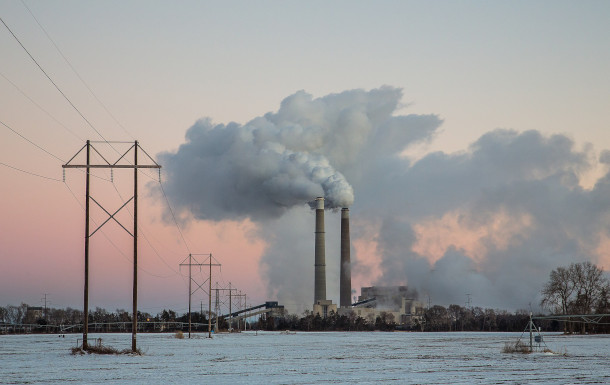
Xcel Energy’s Sherburne County (Sherco) Generating Station, a coal-fired power plant, near Becker, Minnesota. (Photo: Tony Webster, Wikimedia Commons CC BY-SA 2.0)
PARENTEAU: Well, it certainly is since Massachusetts v. EPA. This decision, could you know, not only limit EPA's authority under the Clean Air Act. But one of the doctrines is something called the major question doctrine. It's a rule that the court and the conservative members would view as kind of a new assertion of authority that an agency hasn't previously used under a provision of a law like the Clean Air Act, that's been on the books since 1970. But it's never been used for anything as big as climate, of course, because we weren't thinking about climate change in 1970, we should have been, but we weren't. And this doctrine is so malleable, that you know, you can apply it to any environmental rule. I mean, most environmental rules, because they're addressing big problems -- air quality, water quality, loss of wetlands, loss of endangered species -- they're dealing with really big problems that do have large economic and social consequences. Some of those consequences are negative from the standpoint of if we don't deal with the problems they're gonna create, you know, economic harm, and other kinds of harm. And if we do deal with them, it's going to cost money to deal with them. But if we don't deal with them sooner rather than later, the cost could be much greater, and so on. The problem is when the court applies the major question doctrine, guess what? The result is almost every single time, in fact, all the cases that I'm aware of is the agency regulation is struck down. It's a deregulatory doctrine. It's used when the court believes the agency has exceeded its authority, and is gonna strike down the rule and require that Congress explicitly authorize the specific action that the agencies want to take. And that's just a recipe for disaster, frankly, for environmental law. We have to be much more adaptive than that.
CURWOOD: This case that we're talking about is called West Virginia v. the EPA. What's the backstory of this case, and explain in some detail the EPA regulation that it's talking about.
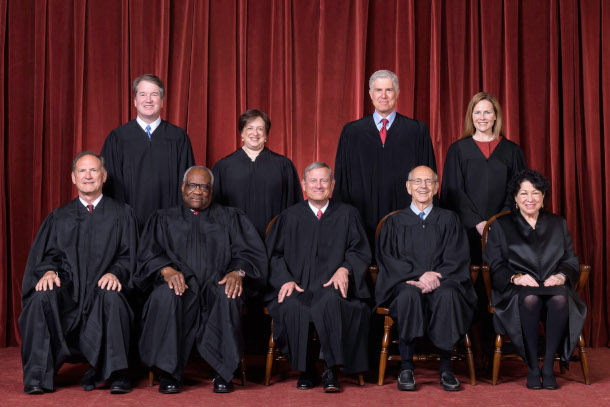
The current members of the Supreme Court of the United States. Front row, left to right: Associate Justice Samuel A. Alito, Jr., Associate Justice Clarence Thomas, Chief Justice John G. Roberts, Jr., Associate Justice Stephen G. Breyer, and Associate Justice Sonia Sotomayor. Back row, left to right: Associate Justice Brett M. Kavanaugh, Associate Justice Elena Kagan, Associate Justice Neil M. Gorsuch, and Associate Justice Amy Coney Barrett. (Photo: Fred Schilling, Collection of the Supreme Court of the United States, public domain)
PARENTEAU: After the Massachusetts v. EPA decision, EPA under the Obama administration adopted rules to regulate power plants under the Clean Air Act. And the plan that EPA came up with was a very flexible, sort of menu of options. Option one was make these plants run more efficiently and burn less coal or less gas. The second step of the Obama plan was use your ability to use more reliance on, on gas and certainly more reliance on wind and solar, use the flexibility the grid gives you to rely more on cleaner sources of energy. And then number three, put more investment in new renewable sources of energy and gradually bring more green energy onto the grid over time. That's the Clean Power Plan. Now, that plan never took effect. The Supreme Court stayed it, even before the lower courts had ruled on whether it was lawful or not. And the Supreme Court in a unprecedented action, another activist step by the five conservatives that were on the court at that time, when Justice Scalia was there -- this was his last vote before he passed away shortly thereafter. So the Clean Power Plan never took effect. The Trump rule came on, they repealed the Obama plan. They replaced it with something called the Affordable Clean Energy plan, which wouldn't have done very much at all to reduce emissions. The estimate was maybe it would reduce it by 1%. And it would rely strictly on efficiency measures, none of these other strategies of relying more on gas or bringing more green energy on, onto the grid. And not even allowing trading, emissions trading, the cap and trade approach. That ACE rule was struck down by the DC Circuit. And that decision by the DC Circuit is technically the one that has is now being, quote, "reviewed" by the Supreme Court. But the important point here is, there is no rule on the books. The ACE rule is not on the books. The Obama Clean Power Plan is not on the books. There's no rule today, nobody's required to do anything right now. And yet, the Supreme Court has said, we're gonna to review whether the Clean Air Act gives EPA the authority to do all of the things that it might like to do to find ways to reduce these emissions in the most cost effective way possible.
CURWOOD: So I'm scratching my head about another thing involving this case, Pat, and that is that many constituents of the electric power industry have supported this approach. So why did West Virginia sue on this rule that doesn't actually exist? And why did the high court take it up?
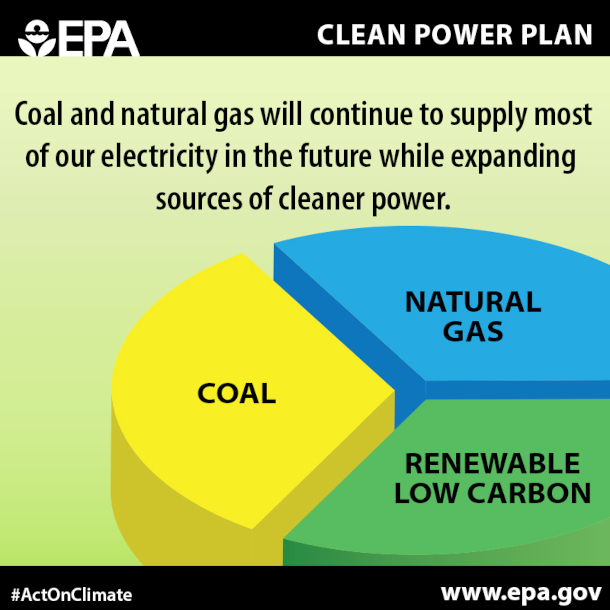
An infographic from 2014 explaining the Obama administration’s Clean Power Plan, which the Supreme Court stayed in early 2016. (Image: US Environmental Protection Agency, public domain)
PARENTEAU: I have to say, Steve, that, you know, West Virginia has led the charge from day one against EPA's authority. I mean, West Virginia, was even arguing EPA had no authority whatsoever to regulate emissions from coal fired power plants. And obviously, West Virginia is a major coal state, you get that. But it's frankly more ideological than that. All of the challengers to the Clean Power Plan, and that have appealed to the Supreme Court, they all resent EPA giving them directions on how to transition the energy source. They're not taking any actions on their own. They could be doing that, but they're not. But they're also not supporting what EPA is trying to do. So there's no other way to describe this than that. It is a political fight. And it's about states versus EPA, and who's in charge, and so forth. And it's not rational.
CURWOOD: So Pat, how do you read the justices? How do you think this is going to be decided based on what you heard during the oral arguments at the Supreme Court the other day?
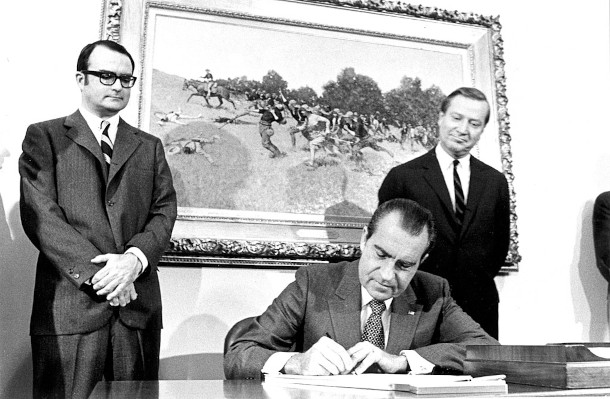
President Nixon signing the Clean Air Act in 1970. Looking on are EPA Administrator William Ruckelshaus and Russell E. Train, Chairman of the Council on Environmental Quality. (Photo: White House Photo Office, public domain)
PARENTEAU: So it was a very active bench. The argument went well over the time that was allotted, almost all the justices participated. And the government, through the Solicitor General, made a very strong argument that the court really didn't have jurisdiction over the case at all, partly because there's no rule on the books to review. But even more importantly, because there was no injury to the petitioners: the states and some of the coal industry that were co-petitioners. And that's because there's no rule on the books, nobody has to do anything at this point. What they're arguing, the petitioners, is, well, we can't trust the Biden administration when they say they're not going to revive the Clean Power Plan. They might. They just might do that. So because they might do that the case should stay alive. That's a really weak, pitiful, frankly, argument. I mean, an environmental group making an argument like that would be tossed out on their ear. But this court, my first prediction is, they're not going to dismiss the case. They're not going to stay their hand the way they should and wait for EPA's rule. They're going to issue a decision. What's the decision going to be? There's several possibilities. For sure, I think, they're going to say a lot of bad things about the Clean Power Plan. Justice Kavanaugh, when he was on the DC Circuit, heard arguments challenging the Clean Power Plan, and he showed his cards very clearly. He would use the major question doctrine to strike down the Clean Power Plan if in fact it was presented to the court. So we can be sure the court is going to be very negative about EPA's authority to require shift to renewable energy, wind or solar or anything else. The real question for me is, are they going to buy into this argument that EPA can only regulate inside the fence line? What it means is, you can only regulate at individual sources. I'm not sure what the court's going to do on that. Kavanaugh, you know, was asking a lot of hard questions about whether that made sense. The government, the Solicitor General, who was terrific, she pointed to the fact that the Clean Power Plan, not only was it never in effect, the goals of the Clean Power Plan have already been exceeded. The industry itself, because of the major transformations underway in the energy sector, have already exceeded the 30% reduction in emissions that the Clean Power Plan had established. So, you know, she made an incredibly powerful argument, I heard, that this major question doctrine, which a lot of us are really concerned about, really doesn't apply here. She just might be able to get Justice Roberts, maybe Justice Barrett, even, and who knows, maybe even Justice Kavanaugh, at least to agree that the major question doctrine doesn't oust EPA of authority to shape a rule. Maybe a rule that doesn't require transition to renewable energy, but maybe a rule that at least allows things like emissions trading and averaging, which would still accomplish a lot of reduction.
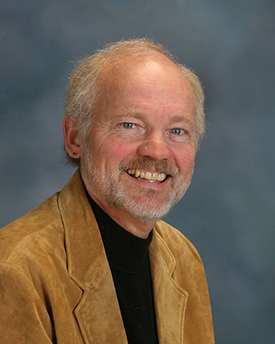
Former EPA Regional Counsel Pat Parenteau teaches environmental law at Vermont Law School (Photo: Courtesy of Vermont Law School)
CURWOOD: Hey, Pat, before you go, President Biden recently announced that Court of Appeals Judge Ketanji Brown Jackson is his pick to replace retiring Supreme Court Justice Stephen Breyer. What do we know about how she might approach cases involving the environment or climate?
PARENTEAU: Well, this is a very careful, brilliant jurist. She takes cases on their facts, on their legal merits. And she delves deeply into the record, that underlies the decisions that she's reviewing. She's, she does the work. And so, you know, if the government or the environmental plaintiff has made their case, she rules with them, and she has. When, on the other hand, there's a precedent that answers the question in the case, she goes with the precedent. It's probably a good thing, first of all, that we're getting a black woman on the court, that's obviously a historic occasion. But it's probably a good thing, that we're getting someone with a track record of being able to work with a lot of different perspectives, and maybe, over time, pull one or two of those younger, conservative members of the court her way. I'm not naive enough to think that's going to happen a lot. But maybe it'll happen more often than not if she hadn't been confirmed, and she's just going to make a tremendous addition to the Supreme Court.
CURWOOD: Pat Parenteau is a Professor of Environmental Law at the Vermont Law School and former EPA Regional Council. Pat, thanks so much today for our discussion.
PARENTEAU: It's a pleasure, Steve.
CURWOOD: We'll talk to you again real soon.
Related links:
- The Washington Post | “In EPA Supreme Court Case, The Agency’s Power to Combat Climate Change Hangs in the Balance”
- Listen to our interview on the landmark climate case Massachusetts v. EPA
- About Pat Parenteau
[MUSIC: Nina Simone, “See-Line Woman” on The Essential Nina Simone, Disc One, by Nina Simone, RCA Records a unit of Sony Music Entertainment’]
DOERING: Coming up, an Antarctic glacier as big as the state of Florida is melting fast and could unleash meters of sea level rise. Stay tuned to Living on Earth.
ANNOUNCER: Support for Living on Earth comes from Sailors for the Sea and Oceana. Helping boaters race clean, sail green and protect the seas they love. More information @sailorsforthesea.org. Support also comes from Friends of Smeagull the Seagull and Smeagull’s Guide to Wildlife. It’s all about the wildlife right next door to you! That’s Smeagull, S - M - E - A - G - U - L - L, SmeagullGuide.org.
[CUTAWAY MUSIC: Kevin Burke & Cal Scott, “Evening Prayer Blues” on Across the Black River, by Bill Monroe, Loftus Music]
Florida-Sized Glacier Could Unleash 2+ Feet of Sea Level Rise
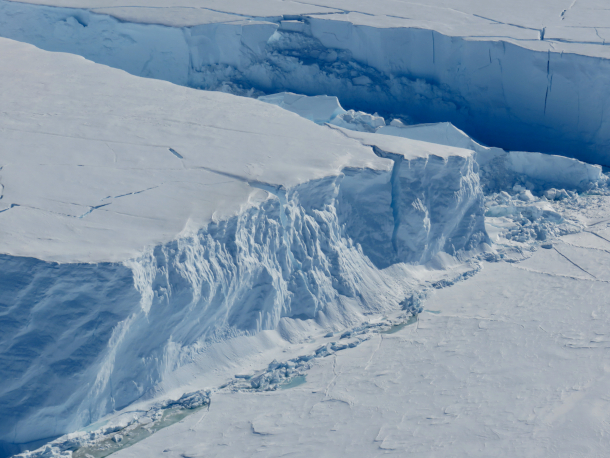
The Thwaites Glacier is one of the hardest to access places of Antarctica, and scientists have only recently been able to go to study the area on the ground. (Photo: Karen Alley)
CURWOOD: It’s Living on Earth, I’m Steve Curwood.
DOERING: And I’m Jenni Doering.
Thwaites Glacier is one of the largest in the world, about the size of Florida. Should it melt completely it would raise sea levels around the world by something like two feet. But even that might be just a start. Some scientists suggest the loss of Thwaites from the West Antarctic Ice Sheet could uncork even more massive amounts of ice behind it, and lead to many feet of sea level rise. And that is why some have dubbed it the "Doomsday Glacier. " Here to help us understand what’s happening to Thwaites is glaciologist Karen Alley. She’s an Assistant Professor in the Centre for Earth Observation Science, Environment and Geography at the University of Manitoba. Professor Alley, welcome to Living on Earth!
ALLEY: Thank you so much for having me.
DOERING: So I've been seeing the word "doomsday" all over the media stories about Thwaites Glacier. How accurate is that term? And how worried should we be that the glacier is on the brink of collapse?
ALLEY: So if you were to argue what is the most important glacier in the world, it would certainly be Thwaites Glacier. Thwaites is huge. It's a little bit bigger than the state of Florida. So this is a tremendously large tract of ice and it is retreating, it is changing very quickly, it is contributing to sea level rise, we expect it to contribute much more to sea level rise in the future. Doomsday depends on how you look at it. So it certainly is something that we need to be paying attention to. It is very important, it is changing, it is going to affect communities all over the world as sea level rise continues. But it's also something that we can learn about and prepare for. And these changes are going to happen on decades-to-centuries type timescales that give us the chance to understand what's happening, and to prepare for those changes that might occur in the future.
DOERING: There are of course, a lot of glaciers on Earth. So besides its size, what else makes Thwaites of special concern?
ALLEY: So, Thwaites Glacier sits at the outlet of a lot of the ice that makes up the West Antarctic Ice Sheet. And this ice sheet is special, A, because it's large, certainly, but B, because of the shape of the land that it's sitting on. So glaciers tend to be very stable and change very slowly, if the land that they're sitting on kind of slopes upward from the coast. But West Antarctica does the opposite. It gets deeper as you go inland from the coastline. And that's not a very stable configuration once you start having forcings that cause a glacier to retreat, if it has that kind of configuration, that kind of shape of its bed, it can get into a feedback loop that basically makes it really hard to stop once it starts. So this is a big glacier. It holds a lot of ice, but it's also in this unstable configuration, that we could push past a tipping point, depending on how we warm the earth in the future.
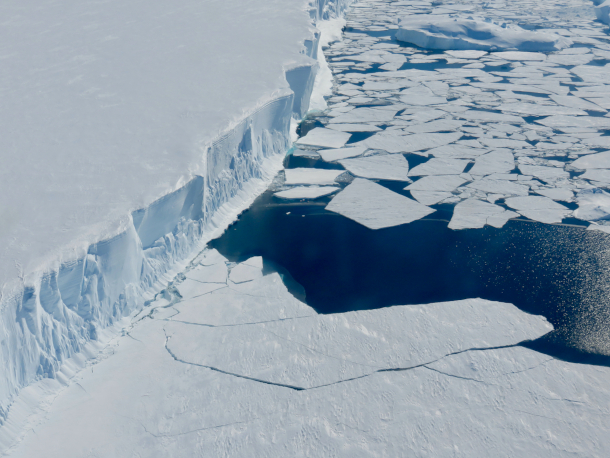
As Thwaites Glacier ice shelf breaks down and melts, it accelerates the melting of the ice behind it. (Photo: Karen Alley)
DOERING: Wow. So even if it is over decades or centuries, how much sea level rise are we talking about here?
ALLEY: With the contributions from Thwaites Glacier and the other glaciers that it will impact as that sea level rises, at maximum over the next few centuries, we'd be talking about a few meters of sea level rise. In the near term, that translates to centimeters to maybe tens of centimeters in our lifetimes. But those are numbers that are very difficult to predict with a lot of certainty. We kind of know the end state. We know that Thwaites could retreat all the way back to the Transantarctic Mountains. And in that case, we're looking at a few meters of sea level rise, but the pacing of that and the amount of that, in the meantime is very difficult to predict.
DOERING: So Dr. Alley, I live here in Boston, and today, it's in the 40s. We've had a lot of ice and snow on the ground recently, and it's all melting away. And it happens pretty quickly over the course of a day or two. It's really hard for me to picture it taking centuries potentially for ice, even this much ice to melt. How is it possible that it takes so long for this ice to melt on the earth?
ALLEY: I've been doing glaciology for quite a few years now. I've been to Greenland, I've been to Antarctica, I've stood on those ice sheets and even being there, it's hard to realize just how much ice there is. In Antarctica as a whole, it has about 57 meters of global sea level, I mean, just picture 57 meters. It's just a tremendous amount of ice. And so those sorts of changes, we're talking about changes that would be significant on a global scale. It just takes a while because there's so much ice there. It's also still quite cold in Antarctica. We are warming the world, for sure, we're warming the oceans, we measure it in the oceans and in the air temperature, but it's still very cold. So at Thanksgiving, if you have your turkey and you thaw it on the counter, it takes several hours to thaw your turkey on the counter, although there's you know, health risks with thawing it on the counter, I don't recommend it. If you thaw it in your refrigerator, it will still thaw but it'll take a lot longer. And we're thawing Antarctica in a refrigerator or in a freezer at this point. It's still a very cold place. But the warming is significant enough for us to be seeing those changes that really matter on a global scale.
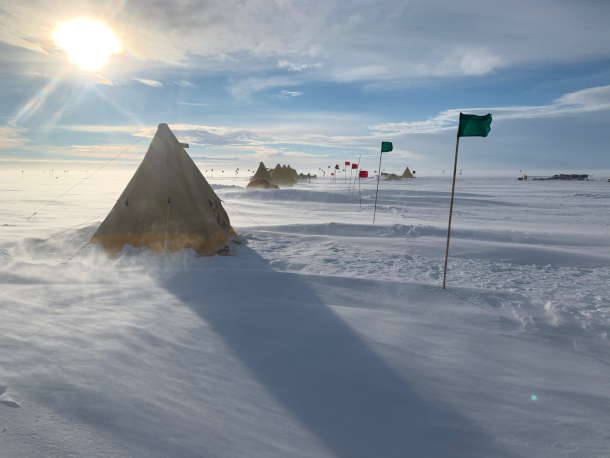
Shown here is one of the camps during the 2019-2020 Thwaites-Amundsen Regional Survey and Network Integrating Atmosphere-Ice-Ocean Processes (TARSAN) project. (Photo: Karen Alley)
DOERING: So you mentioned Thwaites is already contributing to sea level rise. How much?
ALLEY: So, global sea level rise right now is a few millimeters per year, and Thwaites Glacier alone contributes about 4% of that sea level rise. So it seems like a really small number. Right now other ice sheets, the Greenland ice sheet and other glaciers contribute to that. We also are seeing sea level rise just because water expands when it gets warmer. So it's taking up more space, and that's causing sea level to rise. But this one glacier alone contributes about 4% of what we're seeing. And we do expect that percentage to increase in the future.
DOERING: So, what exactly is being researched at the Thwaites Glacier now, what are scientists still looking to figure out?
ALLEY: There are many aspects that we're still trying to figure out. And there are many different teams that are working on those very distinct aspects. So one thing we're definitely trying to constrain is what the ocean is doing. So the changes that we're seeing are most directly because of changes in ocean circulation and ocean temperature. And so we need to determine what those changes are, and explain why they have happened and how they're likely to change in the future. On the ice itself, we're measuring the ice shelf, we're trying to understand the structures of the ice shelf, and the dynamic processes that govern how it flows, so that we can understand its stability, and when it is likely to disintegrate. Then we move upstream, and we think about that area where it goes from sitting on land to going afloat. That's called the grounding zone. And there are really complicated processes with how the ocean interacts with the ice there and how the dynamics, the physics of the ice works with the grounding stone. And even upstream above that, there's a lot we don't know about what the bed is like that the glacier is sitting on. So we need to determine how it behaves, if we're going to be able to predict how the grounded ice, the ice that sitting on land, is going to respond to these changes in the future.
DOERING: Professor Alley, what do you want the public and policymakers to understand about Thwaites?
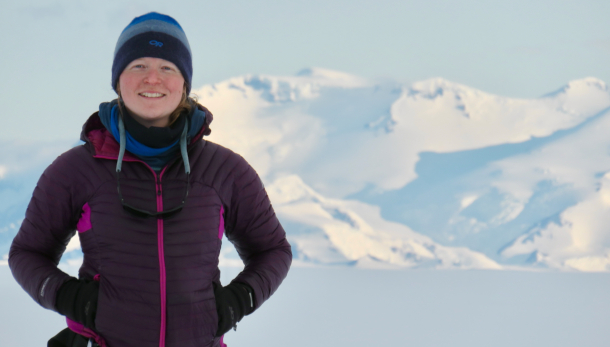
Karen Alley is an Assistant Professor in the Centre for Earth Observation Science, Environment and Geography at the University of Manitoba. (Photo: Cecelia Mortenson, Courtesy of Karen Alley)
ALLEY: First of all, there's a lot that we still don't know about Thwaites. We're doing our best, we definitely know the direction things are going. Thwaites is retreating, Thwaites is contributing to sea level rise. We don't yet know for sure, if we've kind of pushed it over a tipping point. There's a chance, if we can keep warming down so that it doesn't get too high, that Thwaites might not retreat all the way. And so being proactive about global climate policies is really important. It may keep Thwaites from retreating all the way. Even if we do cause Thwaites to retreat, it will take a while for that sea level rise to become really large. It's already happening. I call sea level rise a 'here-and-now problem' because there are already coastal communities being impacted by sea level rise. But those impacts are going to get much larger in the future, even if we don't push Thwaites over a tipping point. But it's really difficult to think that far in the future as policymakers, right? It's hard to plan that far in the future. But it's something we have to do. It's something that we know is coming. And so it's something we need to start thinking about responding to now. Or we're going to see really huge impacts, which we're already starting to see, particularly on vulnerable communities that live in coastal regions.
DOERING: Karen Alley is an assistant professor in the Center for Earth Observation Science, Environment and Geography at the University of Manitoba. Thank you so much, Dr. Alley.
ALLEY: Thank you for having me.
Related links:
- The International Thwaites Glacier Collaboration website
- More about Professor Karen Alley
- Click here for a 2021 paper co-authored by Professor Alley on Thwaites
[MUSIC: Oliver Nelson “Stolen Moments” on The Blues and The Abstract Truth, UMG Recordings]
Rising Seas Threaten Archaeological Treasures
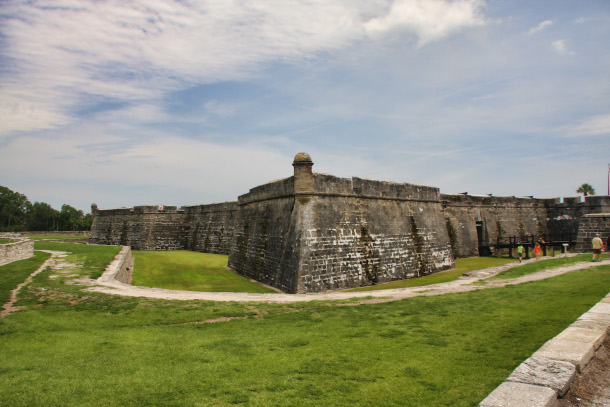
The Castillo de San Marcos is one of the major heritage sites in St. Augustine, Florida. It is made of coquina, a stone composed of soft, porous shells, which is a weak barrier against water. (Photo: Evangelio Gonzalez MD, Flickr, CC BY-NC-ND 2.0.
CURWOOD: Even when sea level rises just inches the effect on low lying shorelines can be felt hundreds or more feet away from the water’s edge. And perhaps no place is more vulnerable than the Florida peninsula, where much of the land along its coastline is mere feet above the seas. Brendan Rivers of WJCT News 89.9 in Jacksonville, Florida has the story of how some archaeologists are racing against time and ocean to document and protect important historic sites.
[RIVER SOUNDS]
RIVERS: Archeologist Emily Jane Murray is working at a site called Shell Bluff Landing in St. Johns County. You’d never guess by looking at it, but she says this wooded area on the Tolomato River has seen thousands of years of human history.
MURRAY: I’m always amazed, every time I come, just how much higher the tide seems at this site.
RIVERS: Murray’s mapping the shoreline to track how water levels have changed… part of a project looking at how climate change is threatening, and in many cases already harming archaeological sites. There’s a well here that was built in the 1800s. Today the river is lapping at its base. but aerial pictures from the 1940s show a hundred feet of shoreline separating it from the water.
MURRAY: It's the Intracoastal Waterway, so a lot of this has been heavily modified and dredged and maintained for navigability. So that's definitely affected the shoreline. And it could have been even further out back in the 1800s when the wall was put in.
RIVERS: A similar story is playing out 10 miles south at the iconic Castillo de San Marcos in historic Downtown St. Augustine. The Spanish built the fort in 1672, making it the city’s oldest building. Steven Roberts with the National Park Service says Downtown floods on a nearly monthly basis during high tides and that’s only going to happen more often as seas rise due to climate change.
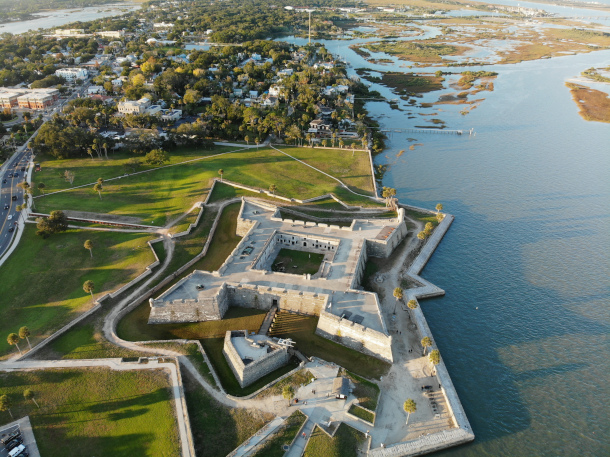
An aerial view of the Castillo de San Marcos, which abuts the shoreline. (Photo: Iagology, Flickr, fCC BY-NC 2.0)
ROBERTS: As the parking lot floods, it becomes harder and harder for visitors to get to the fort and obviously we see less visitation on those days.
RIVERS: That’s a big deal because the main economic driver here is heritage tourism — people visiting historic places — and the Castillo is the main attraction, bringing in about 800-thousand visitors — who spend an estimated 40 million dollars a year. The Castillo’s walls are coquina, a stone made of compressed shells that’s soft and porous. Those are good qualities when facing cannon fire but not so much when it comes to water. Roberts says the absorbent coquina could compromise the fort’s integrity as climate scientists predict seas could rise about 3 feet in the next 50 years.
ROBERTS: Now that might not seem like a lot, but what it would do is it would overtop some of our sea walls, it would add water to our dry moat, and that water over time continuing to press against the soft coquina stone, could definitely weaken the foundation and over time erode the foundation, as well as the walls of the Castillo.
RIVERS: Floodwaters could reach the structure multiple times per year by mid-century, up from today’s average of less than once a year, Climate Central data show. Recognizing the risk, the city of St. Augustine is taking steps to fight back the rising tides. The Old City has just 15-thousand or so residents and an annual budget of just 60 million dollars, but since 2016, they’ve spent tens of millions on preventing floods. They’ve raised sea walls, retrofitted drainage systems and raised structure with other projects in the works. And earlier this year, the city named engineer Jessica Beach as Chief Resilience Officer.
BEACH: I think having the historical resources within our city, that's all the more reason for us to be aggressive with this and do what we can
RIVERS: But all of these projects probably won’t be enough if climate change continues unabated. With that possible outcome in mind, the National Park Service is turning to the Center for Digital Heritage at the University of South Florida.
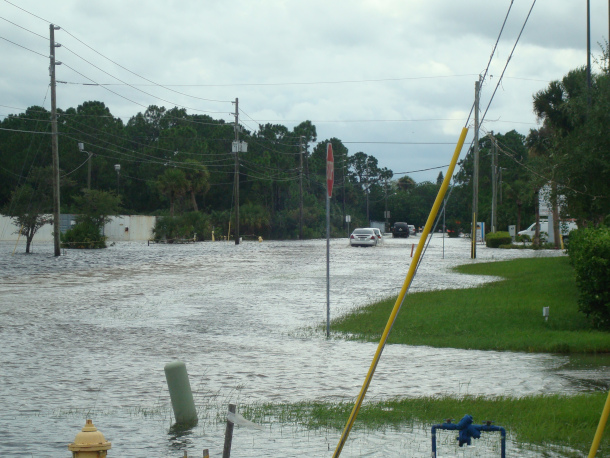
Rising sea levels in Florida threaten to submerge residences. Downtown floods now occur in Florida on a regular, monthly basis during high tides. (Photo: Highlander 411, Flickr, CC BY 2.0)
COLLINS: We use a series of different types of digital strategies to document and record cultural heritage locations.
RIVERS: That’s Digital Heritage Center Director Lori Collins.
COLLINS: So we can do things like replicate, fabricate and present things in virtual reality that are very realistic, present things in augmented reality for the classroom to let people kind of explore and engage right in their own classroom. And then we're doing things with imaging where we're creating virtual tours for the parks.
RIVERS: For archeologist Emily Jane Murray, artifacts are tied to their original locations. So losing a site means losing a big chunk of history.
MURRAY: I think about climate change impacts too. If this is what’s happening to the places where people used to live now, what's coming for the places where we live? Because it's not slowing down. These impacts are just kind of gonna snowball.
RIVERS: Murray compares it to the famous fire at the Library of Alexandria: flooding caused by fossil fuel pollution is threatening to destroy historic resources along the coast, leaving archeologists scrambling to learn as much as possible before they’re lost.
CURWOOD: That story was reported by Brendan Rivers of WJCT News 89.9 in Jacksonville.
Related links:
- Emily Murray’s website
- National Park Service Steven Roberts' Bio
- Castillo de San Marcos
- Lori Collins Digital Heritage Center of South Florida
[MUSIC: Roy Hargrove “Crazy Race” on Distractions, Verve Music Group]
DOERING: Coming up – The joys of ice fishing on a frozen river as the tides come in and out. That’s just ahead on Living on Earth.
ANNOUNCER: Funding for Living on Earth comes from you, our listeners, and United Technologies, combining passion for science with engineering to create solutions designed for sustainability in aerospace, building industries, and food refrigeration.
[CUTAWAY MUSIC: Trio Voronezh, “Gershwin Medley” on Trio Voronezh, by George Gershwin/arr.Trio Voronezh]
IPCC’s “Atlas of Human Suffering”
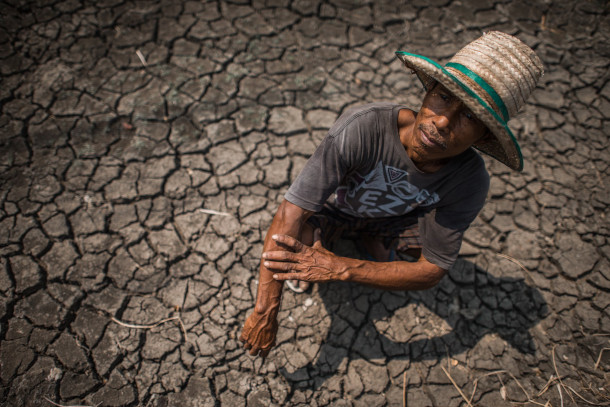
The IPCC report warns that across all types of agriculture drought has caused financial and emotional affliction across farm communities. (Photo: UNDP Thailand, Flickr, CC BY-NC-ND 2.0)
CURWOOD: It’s Living on Earth, I’m Steve Curwood
DOERING: And I’m Jenni Doering.
The climate emergency is at risk of becoming a disaster for human civilization, warns a new report from the United Nations Intergovernmental Panel on Climate Change. We’ve heard these warnings since 1990, but this latest assessment provides even more stark detail of how billions of people are highly vulnerable to the disruptive and dangerous effects of global warming. For more we are joined by Michael Oppenheimer, Professor of Geosciences and International Affairs at Princeton University, who was a review editor for the Sixth Assessment by the IPCC. Michael Oppenheimer, welcome back to Living on Earth!
OPPENHEIMER: Thanks for having me again.
DOERING: This report really spells out the impacts that climate change is causing already and is going to continue to cause to humans to ecosystems. And UN Secretary General Antonio Guterres said in a statement about the report that this is really an atlas of human suffering and a damning indictment of failed Climate Leadership. Can you tell us about some of the findings in this report about that suffering about how, for example, climate change is affecting human health?
OPPENHEIMER: Well, the largest cause of climate related mortality in the United States is heat related death. And what we know about the climate is heat waves are already becoming more intense and occurring more often and when they occur people die. There is actually a limit to the body's ability to dissipate heat, which means that at a certain point, where there's a combination of heat and humidity, which, for instance, keeps people from cooling themselves by perspiration, because the atmosphere is too humid to absorb the perspiration, that it's so hot and humid that you can't carry on normal outdoor activities without risking death. That already occurs in certain parts of the world, say, the Persian Gulf region. But the regions in which it'll be too hot on some days in the hot season and too humid at the same time so that humans can go outside and say, do construction in the construction industry, do farming outdoors, kids playing soccer outdoors, it becomes impossible. And that area of the world is going to grow from relatively small right now to larger and larger. And there are places in the US that are going to suffer that combination of high heat and high humidity so that outdoor activity beyond just kind of lying there is simply not going to be possible without taking your life in your hand. That's the kind of change we're looking at in many areas.
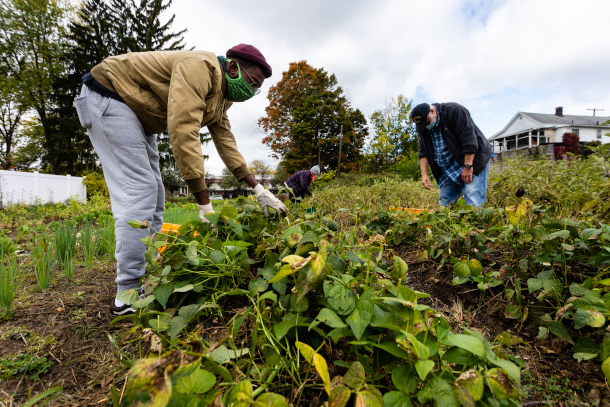
The IPCC report warns that if the world reaches 1.5°C of warming about 8% of the world's farmland would become unsuitable for agriculture. (Photo: Will Parson, Chesapeake Bay Program, Flickr, CC BY-NC 2.0)
DOERING: Speaking of that kind of heat and its impacts on humans. You know, according to this latest report by 2050, urban areas could be home to two thirds of the world's population. And we know that many of these urban areas, they have a lot of concrete, they have this urban heat island effect, you know, they don't have necessarily enough greenery. What solutions does this report point to in terms of dealing with this problem?
OPPENHEIMER: Cities actually, because they know about the risk are ahead of national governments in worrying about the future. So in many ways are going to guide the way but they're also hotspots for climate change. And one of the reasons there are hot spots is this urban heat island point that you just made. In areas that are very built up heat tends to not only be generated at higher rates, for instance, that air conditioning for all those buildings spills heat out into the sidewalks. But the concrete itself is a bad surface, both for buildings and for pavement, in that it absorbs a lot of heat during the day and it traps that heat as the normal surrounding area starts to cool off at night. So cities rob us of nature's natural response to too much heat. As a result, they tend to be several degrees hotter particularly at night than the surrounding areas. And so if you think about a hot urban area in the tropics, the tropics are already hot, you lay more heating on top of that from climate change and then you add some more due to the urban heat island effect in the urban areas and you get a really nasty combination. You get possibly much higher temperatures than anybody is used to. And we know what happens when temperatures get too high, as we mentioned before people die. The best example, the most recent example for Americans is the extreme heatwave we had in the Pacific Northwest this past summer. About 200 people died in Washington, Oregon, and Southwestern Canada, an area which is not used to hot weather where there isn't much air conditioning, and where temperatures were much higher than any thing that had occurred in recent history. And scientists were able to look at that event and say, there's no question about it, that would not have happened without the buildup of the greenhouse gases and the climate change. So now, the question for those people is, it's going to happen again, it's probably going to happen a lot more frequently than it ever happened before if it ever happened before. And how are we going to protect people? How are we going to keep hundreds of people from dying? Because next time it might be thousands of people.
DOERING: Well so, what are some of those steps that cities in particular could take to protect people? Because this is a reality it's already here.
I'm an author on the new #ipcc report and I study climate change impacts and adaptation options in #Africa. ????: How bad could it get? Who is most vulnerable? How can we adapt? Here's a report summary for Africa.
— Christopher Trisos (@christrisos) March 1, 2022
full report https://t.co/dqudeKpzbF
tldr https://t.co/BCSOHRQ4rW pic.twitter.com/pGpqH2R18E
OPPENHEIMER: So in a lot of urban areas now in some countries, at least certainly in the United States, roofs on buildings are painted an aluminum type color because it reflects sunlight and it makes the buildings a lot cooler. Building codes now require many cases insulating roofs to keep heat inn in the winter, and keep it out in the summer. There are things that people know how to do, but one thing I'm really worried about are that these are all sort of decisions that have to be made cooperatively, they're collective decisions or governmental decisions. For some parts of the climate problem like extreme heat, we've privatized it, we go around assuming everybody can get air conditioning but a lot of people are poor, they can't afford air conditioning. Or if there's a blackout because of a heatwave because of too much draw, then everybody stuck with that air conditioning. And we've made almost no preparation for those kinds of people or that kind of eventuality.
DOERING: You know, one of the most concerning points in the report is that if we keep emissions at the current rate, at least 1 billion people are at risk of losing their homes as a result of climate change by 2050. So we're talking about an eighth of today's population, you know, an eighth of the people on earth now becoming homeless. What do we know so far about what people living in vulnerable areas can do to protect themselves?
OPPENHEIMER: Well, there are, generically two ways that people become homeless, one is temporary, and the other is permanent. In catastrophic events, like a hurricane, people can be driven from their homes because there's an evacuation. Usually what happens is they go someplace else temporarily and they try to come back. The other kind of migration that occurs isn't really displacement, which refers to the short term phenomena. It's a longer term phenomenon, say, a farmer in a developing country that has a subsistence level of existence and is very dependent on every season being good for production of whatever crop they grow. As the climate changes and as there's less precipitation in some areas, you get to the situation where crop yields decline. And at a certain point the farmer starts to envision that there isn't going to be a livelihood for his family there. And they may decide to move the whole household. And then that's leads essentially to a long distance and in many cases permanent migration. And this is not some arcane phenomena that’s just in a few areas of the developing world. We have it happening here in the United States, where we have coastal regions that are sinking, and where the government offers buyouts of homes. They’re voluntary but what's left behind is a community which is no longer functional in some cases. And somebody has to make a decision essentially, to turn off the lights at a certain point. So that whole process of easing transitions for people, for households and for communities is something our government has only partially grappled with in the United States. That has to be thought about more carefully.
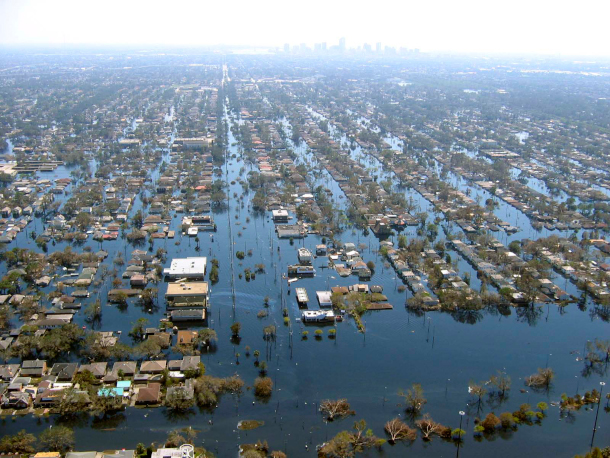
View of flooded New Orleans, Louisiana in the aftermath of Hurricane Katrina. According the IPCC every year half a million people are at risk of flooding and about a billion people living along coasts will be exposed by 2050. (Photo: Commander Mark Moran, NOAA Aviation Weather Center, Wikimedia Commons, Public Domain)
DOERING: The report points to sea level rise, you know, and how it's connected to the level of warming that happens. You know, there's different levels of sea level rise, we could see over the coming decades and hundreds of years, depending on how much the climate warms in the next several decades. And I'm wondering how much of the impact of sea level rise will be something that people can adapt to where they are versus being entirely displaced?
OPPENHEIMER: Depends very much where you live, and how close to the coast you live. So there are some places around the world and in the US, where is the coast of being abandoned already. And that's because you can't build a whole seawall around most coastal countries, you can't build a seawall around the United States. In fact, even in Miami, a big megalopolis, rich place, we want to protect that but because it sits on calcium deposits that are very porous, limestone essentially, if you built a seawall to protect Miami, the water just goes under the seawall through the porous limestone and comes up in the city anyway. Now, certain areas that are geologically possible to protect, like cities that are somewhat further up the coast, like Savannah, New York, Boston. It will be possible to spend a lot of money and I mean, a lot of money building infrastructure like sea walls and surge barriers that will protect those places. And for places that have a high value financially, that'll probably be done. But for places that have neither a lot of money, nor the political cloud to get the money to be spent on them they're going to have to move away from the coast. There is no other option. So what percentage of the population that is? We can't really say at this point, the estimate of a billion people being displaced overall. I think that's a very soft estimate, we really don't know. But the point is if we sit here and do nothing we'll make it a reality. What we have to do is start thinking ahead, do that planning on you know, 30, 40, 50 years ahead. That can work and keep displacement to a minimum.
DOERING: Michael Oppenheimer is professor of Geosciences and International Affairs at Princeton University. Thank you so much, Michael.
OPPENHEIMER: It's been a pleasure.
Related links:
- Read the 2022 IPCC Report: Impacts Adaptation and Vulnerability
- Learn more about Professor Michael Oppenheimer
- Reuters | “UN Climate Report Urges World to Adapt Now, Or Suffer Later”
- The Guardian | “What Is the IPCC Climate Change Report – And What Does It Say?”
- TIME | “Climate Change Will Mean More Expensive Grocery Bills For Everyone, According to New IPCC Report”
- Watch the IPCC Press Conference - Climate Change 2022: Impacts, Adaptation & Vulnerability
[MUSIC: Duke Ellington, “Haupe” on Anatomy of a Murder, Columbia Records]
Climate in the State of the Union
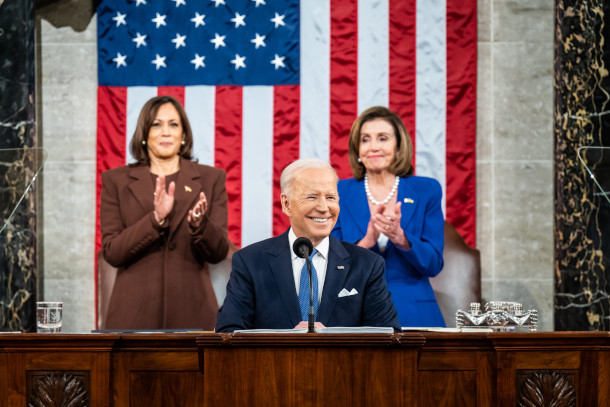
President Biden, flanked by Vice President Kamala Harris and Speaker of the House Nancy Pelosi (Photo: US Government Work)
CURWOOD: With me on the line out from Atlanta is Peter Dykstra. He's an editor with environmental health news at EHN.org. And DailyClimate.org. Hi there, Peter.
DYKSTRA: Hi, Steve.
And today we're going to talk about the State of the Union address by President Biden. You know, I didn't hear a whole lot of time being spent on the climate and the environment.
DYKSTRA: Well, you know, there's no State of the Union address in our lifetimes that has said a whole lot about the environment. And frequently, it's just one throwaway line. And you go back to the 1980s, Ronald Reagan actually said that the environment was too important to be a partisan issue. And it just has become more and more partisan ever since. In the 90s, Bill Clinton vowed to clean up the morass, we know as superfund and of course, the morass is there and as big as ever. And of course, in 2006, George W. Bush looked America squarely in the eye and confessed that we're addicted to oil. And here we are, still addicted to oil.
CURWOOD: Well, because of what's going on now in Ukraine, President Biden is having to add more oil from the strategic petroleum reserves to help address the run-up in prices.
DYKSTRA: Yeah, but in the speech, he also went long on clean energy, electric vehicles as a central part of America's future. That's more than any President has ever laid out as a goal or a promise. Of course it's a bigger promise to keep. So we'll see.
BIDEN: Let's cut energy costs for families, an average of $500 a year by combating climate change. Let's provide an investment tax credit to weatherize your home and your business, to be energy efficient, and get a tax credit for it. Double America's clean energy production in solar, wind and so much more. Lower the price of electric vehicles saving another $80 a month that you're not going to have to pay at the pump.
DYKSTRA: Clean Energy wasn't all that he had to say. Ukraine, of course, played big in the speech. And of course, natural gas is a big part of the Ukraine-Russia story. Cutting off a major pipeline to Germany was one of the severe economic penalties that the West, mostly Europe and the United States, has inflicted on Putin and Russia. The GOP continued its call to drill baby drill. But Biden said he's leading the way ahead with jobs, baby jobs.
BIDEN: Just look around and you'll see an amazing story. The rebirth of pride that comes from stamping products "Made in America," the revitalization of American manufacturing. Companies are choosing to build new factories here when just a few years ago they would have gone overseas. That's what's happening. Ford is investing $11 billion in electric vehicles creating 11,000 jobs across the country. GM is making the largest investment in its history: $7 billion to build electric vehicles, creating 4,000 jobs in Michigan. All told, 369,000 new manufacturing jobs were created in America last year alone.
DYKSTRA: Now there's a traditional midterm slaughter when the party in power usually loses seats in the House and Senate by appealing to the middle and resisting the temptation to go after Republicans. Biden hopes to stave off that slaughter.
CURWOOD: Okay, well thanks, Peter.
DYKSTRA: Well, Steve, one of the things that got very little attention with everything that's been in the news is that Senator Jim Inhofe of Oklahoma is going to resign his Senate seat at the end of the year. Inhofe, of course, is arguably the most influential climate denier in United States history.
CURWOOD: As I recall, you and the senator have a bit of shared history.
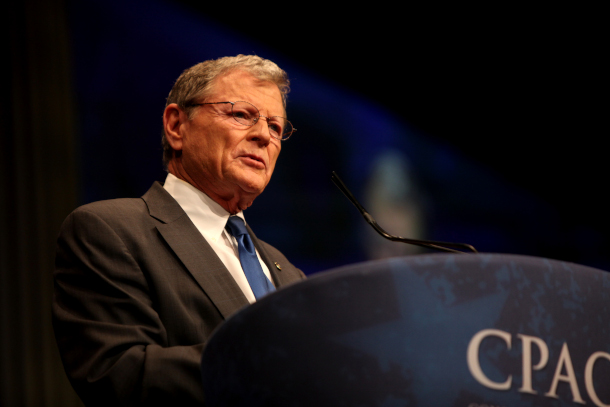
Jim Inhofe, Republican Senator of Oklahoma, is one of America’s most prominent climate-change deniers. He is the author of “The Greatest Hoax: How the Global Warming Conspiracy Threatens Your Future”. (Photo: Gage Skidmore, Flickr, CC BY-SA 2.0)
DYKSTRA: Oh, we do. I asked the senator and his press secretary if I could interview Jim Inhofe. The interview is set for 10:30am Eastern Time on November 17, 2034 when the very robustly healthy Jim Inhofe turns 100 years old and at that time, I'm going to ask him how, what he calls the climate hoax, is how its faring.
CURWOOD: That'll be an interesting conversation. Well, thanks, Peter. Peter Dykstra is an editor with environmental health news, that's EHN.org. And at DailyClimate.org We'll talk to you again real soon.
DYKSTRA: Okay, Steve, thanks a lot. We'll talk to you soon.
CURWOOD: And there's more on these stories on the living on Earth website. That's LOE.org.
Related links:
- State of the Union Transcript
- State of the Union Recording
[MUSIC: Julian Lage, “Day and Age” on World’s Fair, Modern Lore Records]
Ice Fishing on a Tidal River
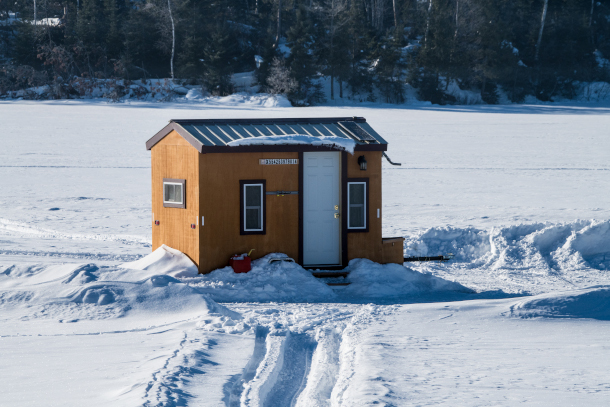
A yellow ice shack located on Shagawa Lake in the Superior National Forest in Minnesota. (Photo: Lance Cheung, Forest Service USDA, Public Domain)
DOERING: Much of winter can be cold and dark, but the bright light reflected from frozen lakes, ponds and streams can be cheery and warm. And that’s the secret of ice fishing. Those little huts for ice fishing that pop up in some the coldest places will soon disappear with the coming of spring. But when Living on Earth’s Bobby Bascomb recently went down to the Exeter River in New Hampshire she found ice fisherman Mark William Damsel still busy outside his shack.
DAMSEL: We just moved the shack, cut a new hole. You can see there's like, I got a tape measure, but I'd say that's at least 14 inches of ice. So what happens is this, see how this has got a black roof? The sun heats this shack up and usually during the day on a sunny day it'll be 65 degrees with no heat in this shack. It actually melts the ice underneath the shack. So what we do is you put two by fours up underneath here to keep the ice cold. So the ice shack doesn't actually melt into the water.
And we got the grill going we got some hot dogs to eat because we've been working so hard.
Usually, you don't catch them during the day. It's always better fishing at night for one reason or another. So right now the tides going down because this is a tidal river, goes with the ocean. Usually, the incoming tide just before high like an hour or two before the high tide, and then an hour or two as the tide goes out. You catch ‘em. But I've caught ‘em during the day the night afternoon. My motto is you can't catch them on the coach.
The river actually pushes the tide up. But there's so much ice and snow and weight down here. Last Sunday the water couldn't push the ice up. All the ice shacks that were down here last weekend. The water came up through our holes and we all had about a foot of water inside of a shack.
So now that we got the ice, ice shack, cut in the hole, so to speak, you can see all the shacks have rope on them. So you drill a hole and you get a piece of wood and you put it up underneath the ice. And then you tie off your shack because most of the shacks are real light. And if you get a wind it will blow them down the river. This one is so light I live up the street seven, eight years ago, it blew all the way down in the marsh we had to go rescue it.
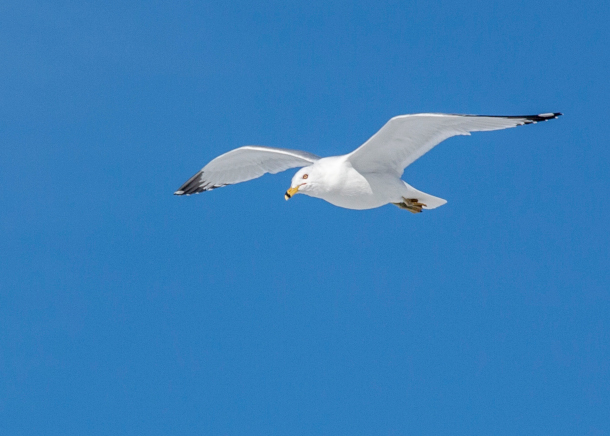
A right billed gull flapping its wings in the bright blue sky (Photo: Paul VanDerWerf, Wikimedia Commons, CC BY 2.0)
My father, grandfather and great grandfather grew up right close to the proximity of the river. So I've fished all my life on the river. When I was a child, I can remember when there was abundance of smelt that we used to actually shovel them into grain bags. That was before the day there was no limit. Now there's only a four quart limit, so you only can take four quarts a day. There haven't been many fish, so things have changed. I believe it's global warming, climate change and pollution as contributing to the decline in the smelt population.
There's about a dozen shacks down here. And it's all a bunch of old, you know, older fellows and a couple young fellows that just come down here and have a good time. I don’t know what the great word is but I look forward to it every year. It's a lot of fun. It's peaceful. It's neat. You see, we just seen the bald eagle down here a little while ago. The seagulls wait for us to catch fish so we can feed them too. We've got the grill going we're gonna have some hot dogs and some food in a little bit once we get this thing set up and it's all good.
DOERING: Ice fisherman Mark William Damsel on New Hampshire’s Exeter River. That audio postcard from Living on Earth’s Bobby Bascomb.
Related links:
- ENVIRONMENTAL FACT SHEET: The Exeter and Squamscott Rivers
- Rainbow Smelt (Osmerus mordax)
- Ice Fishing in NH
- Ice Fishing in NH: The Beginner’s Guide
[MUSIC: Dana Cunningham, “Unfolding Journey” on Dancing at the Gate, by Dana Cunningham, RockingEchoMusic]
CURWOOD: Living on Earth is produced by the World Media Foundation.
Our crew includes Naomi Arenberg, Bobby Bascomb, Paloma Beltran, Chloe Chen, Iris Chen, Josh Croom, Gabriella Diplan, Mark Kausch, Mark Seth Lender, Don Lyman, Louis Mallison, Aynsley O’Neill, Sophia Pandelidis, Jake Rego, Teresa Shi, and Jolanda Omari.
DOERING: Tom Tiger engineered our show. Alison Lirish Dean composed our themes. You can hear us anytime at L-O-E dot org, Apple Podcasts and Google Podcasts, and like us, please, on our Facebook page - Living on Earth. We tweet from @livingonearth. And find us on Instagram at livingonearthradio. I’m Jenni Doering.
CURWOOD: And I’m Steve Curwood. Thanks for listening!
ANNOUNCER: Funding for Living on Earth comes from you, our listeners, and from the University of Massachusetts, Boston, in association with its School for the Environment, developing the next generation of environmental leaders. And from the Grantham Foundation for the protection of the environment, supporting strategic communications and collaboration in solving the world’s most pressing environmental problems.
ANNOUNCER 2: PRX.
Living on Earth wants to hear from you!
Living on Earth
62 Calef Highway, Suite 212
Lee, NH 03861
Telephone: 617-287-4121
E-mail: comments@loe.org
Newsletter [Click here]
Donate to Living on Earth!
Living on Earth is an independent media program and relies entirely on contributions from listeners and institutions supporting public service. Please donate now to preserve an independent environmental voice.
NewsletterLiving on Earth offers a weekly delivery of the show's rundown to your mailbox. Sign up for our newsletter today!
 Sailors For The Sea: Be the change you want to sea.
Sailors For The Sea: Be the change you want to sea.
 The Grantham Foundation for the Protection of the Environment: Committed to protecting and improving the health of the global environment.
The Grantham Foundation for the Protection of the Environment: Committed to protecting and improving the health of the global environment.
 Contribute to Living on Earth and receive, as our gift to you, an archival print of one of Mark Seth Lender's extraordinary wildlife photographs. Follow the link to see Mark's current collection of photographs.
Contribute to Living on Earth and receive, as our gift to you, an archival print of one of Mark Seth Lender's extraordinary wildlife photographs. Follow the link to see Mark's current collection of photographs.
 Buy a signed copy of Mark Seth Lender's book Smeagull the Seagull & support Living on Earth
Buy a signed copy of Mark Seth Lender's book Smeagull the Seagull & support Living on Earth

